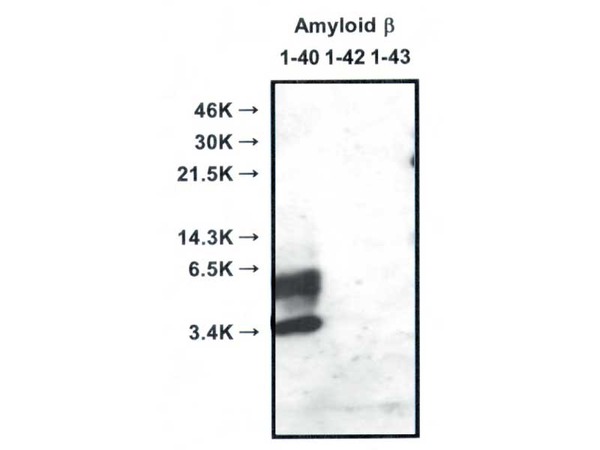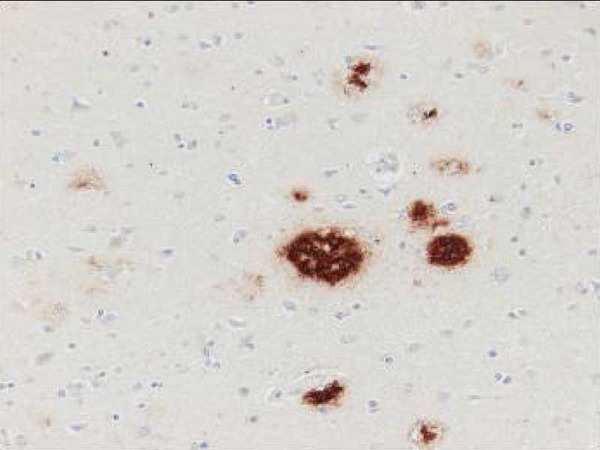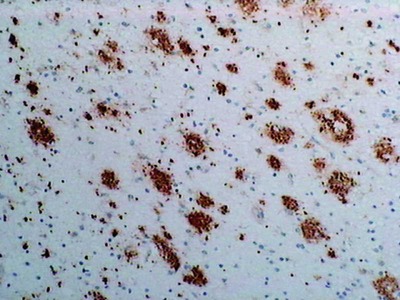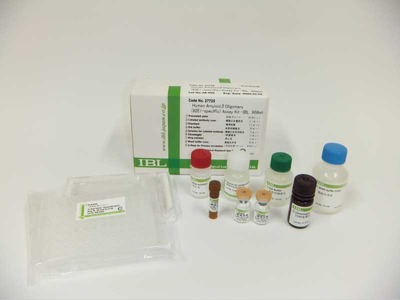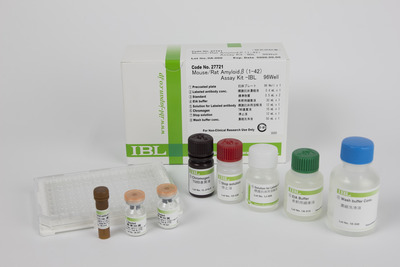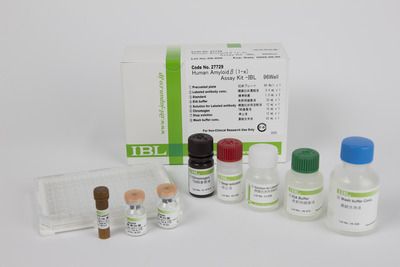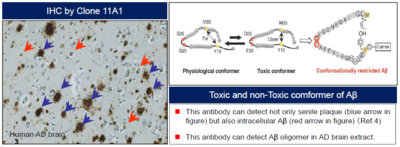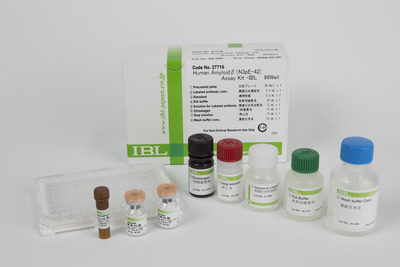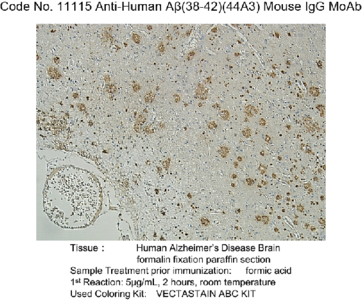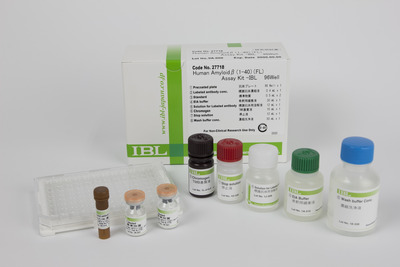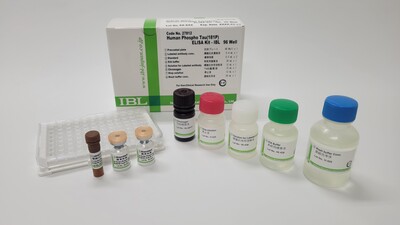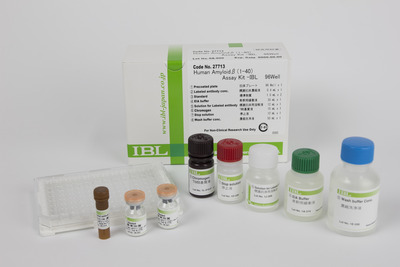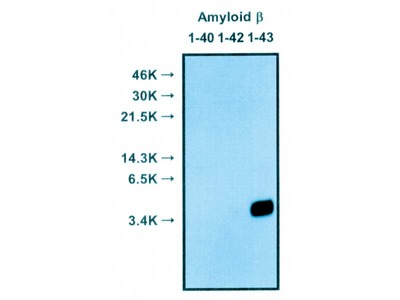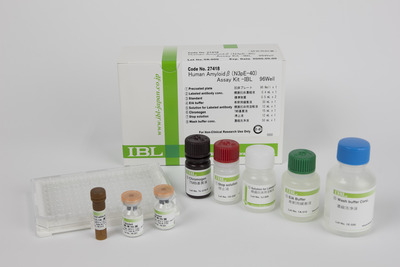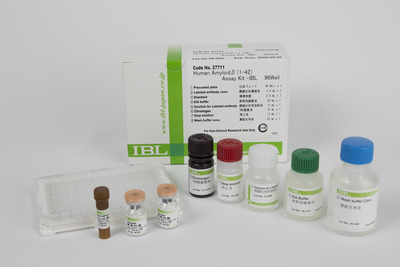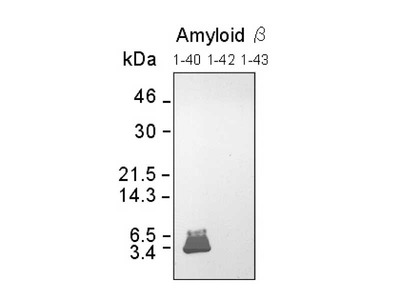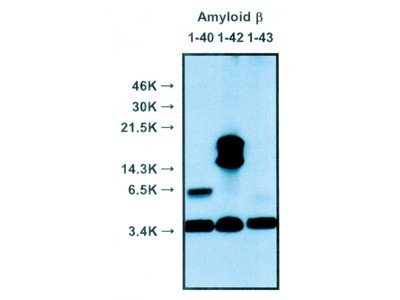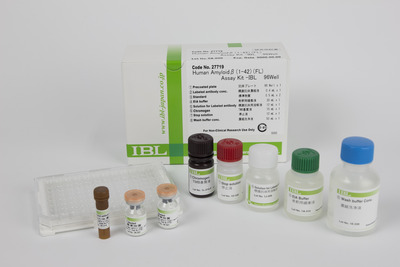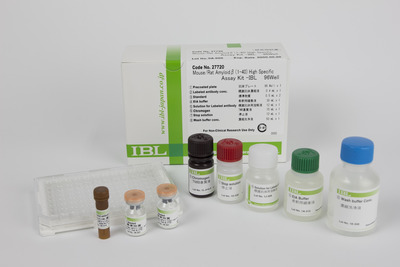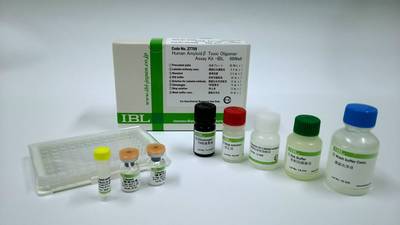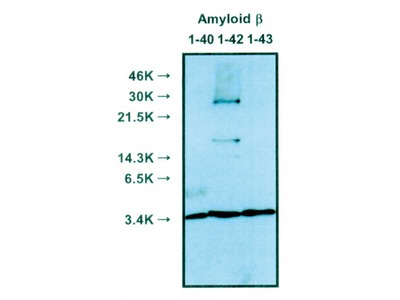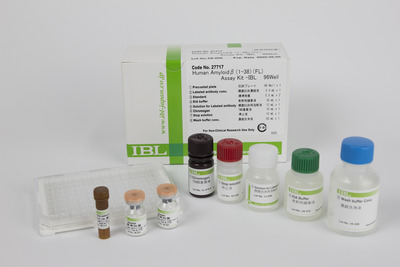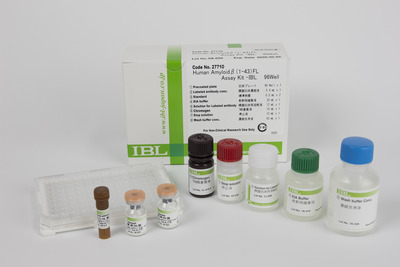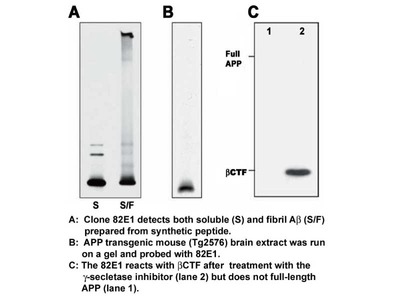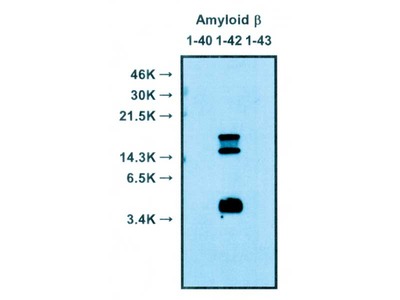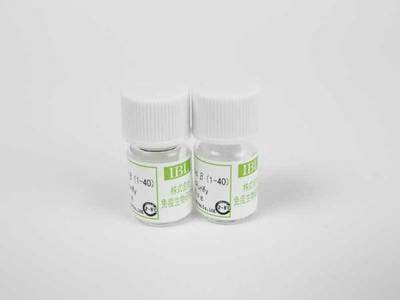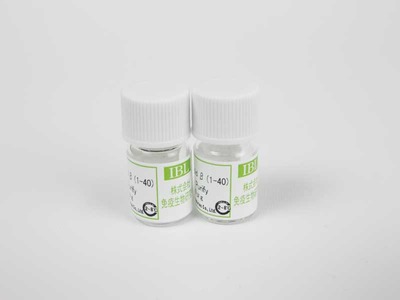- HOME >
- For Researchers >
- Product Search >
- Search Result >
- #10047 Anti-Human Amyloidβ (35-40) (1A10) Mouse IgG MoAb
Product Search
#10047 Anti-Human Amyloidβ (35-40) (1A10) Mouse IgG MoAb
- Intended Use:
- Research reagents
- Application:
- WB, IP, IHC
- Package Size1:
- 50 μg
- Package Size2:
- 5 μg
- Note on Application Abbreviations
- WB:Western Blotting
- IP:Immunoprecipitation
- IHC:Immunohistochemistry
※ The product indicated as "Research reagents" in the column Intended Use cannot be used
for diagnostic nor any medical purpose.
※ The datasheet listed on this page is sample only. Please refer to the datasheet
enclosed in the product purchased before use.
Product Overview
Product Overview
| Product Code | 10047 |
|---|---|
| Product Name | Anti-Human Amyloidβ (35-40) (1A10) Mouse IgG MoAb |
| Intended Use | Research reagents |
| Application | WB, IP, IHC |
| Species | Human |
| Immunizing antigen | Synthetic peptide of human Amyloidβ(35-40) (MVGGVV) |
| Source | Mouse-Mouse hybridoma (X63 - Ag 8.653 × BALB/c mouse spleen cells, supernatant) |
| Clone Name | 1A10 |
| Subclass | IgG1 |
| Purification Method | Affinity purified with antigen peptide |
| Specificity | Human Amyloidβ (1-40) specific. Not detect Human Amyloidβ (1-42) or Amyloidβ (1-43) at the same level in western blotting. Reacts with Mouse and Rat. |
| Package Form | Lyophilized product in PBS containing 1 % BSA and 0.05 % NaN3 |
| Storage Condition | 2 - 8℃ |
| Poisonous and Deleterious Substances | Applicable |
| Cartagena | Not Applicable |
| Package Size 1 | 50 μg |
| Package Size 2 | 5 μg |
| Remarks1 | The commercial use of products without our permission is prohibited. Please make sure to contact us and obtain permission. |
Product Description
Product Description
We are sorry, but we can not sell this product in the territories at USA, Canada and Europe due to patent issues. Alzheimer's disease (AD) is characterized by the presence of extracellular plaques and intracellular neurofibrillary tangles (NFTs) in the brain. The major protein component of these plaques is beta amyloid (Aβ) peptide, a 40 to 43 amino acid peptide cleaved from amyloid precursor protein by β-secretase and γ-secretase. Increased release of Aβ42 or Aβ43, both of which exibit a greater tendency to aggregate than Aβ40, occurs in individuals expressing certain genetic mutations, ApoE alleles or may involve other undiscovered factors. Many researchers theorize that it is this increased release of Aβ42/Aβ43 which leads to the abnormal deposition of Aβ and the associated neurotoxicity in the brains of affected individuals. It is also reported that a distinct Aβpeptide, AβN3pE, is deposited in senile plaques in a dominant and differential manner as compared with the standard Aβpeptide.
References
References
- BACE1 inhibition reduces endogenous Abeta and alters APP processing in wild-type mice. Nishitomi K et al. J Neurochem. 2006 Dec;99(6):1555-63.PMID: 17083447
- Development of Abeta terminal end-specific antibodies and sensitive ELISA for Abeta variant. Horikoshi Y et al. Biochem Biophys Res Commun. 2004 Jul 2;319(3):733-7.PMID: 15184044
Note: Retrieve by PMID number in displayed by abstract: http://www.ncbi.nlm.nih.gov
FAQ
FAQ
-
 Q.Can this antibody stain frozen sections?
Q.Can this antibody stain frozen sections? -
 A.No it cannot.
A.No it cannot.

